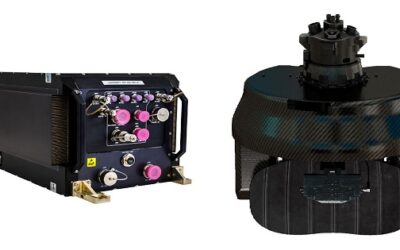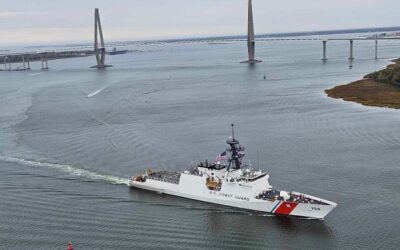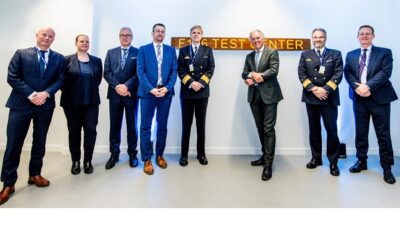Massive Data Analytics will Characterise Future Developments
About three years ago, the independent research and development organisation within Dulles, VA-based Technica selected the next-generation tactical edge as an area of strategic focus. Brendon Unland, Senior Technology Strategist, recalled his team anticipated the US Department of Defense’s (DoD) desire to take the functionality we experience with cellphones and broadband internet connectivity every day and deliver those capabilities to troops on the battlefield. “More specifically, we wanted to develop artificial intelligence algorithms that augment the soldier to enable better situational awareness, improved operational tempo and increased lethality. Whereas past tactical edge communications environments have remained largely uncontested and undenied – given the low cost of jammers and similar equipment – the NextGen Tactical Edge must elegantly handle denied, disrupted, intermittent, and limited (D-DIL) communications,” he explained.
Reflecting on DoD requirements encouraging Technica to invest resources in this arena, he also pointed out they run the gamut across the tactical edge spectrum within a multi-domain (land, air, sea, space, and cyber) battlespace. “Some specific requirements are to improve context from robots that are mapping subterranean environments, for example by adding imagery; translating foreign languages on-the-fly and performing sentiment analysis; translating text from signage and billboards and then spoken to soldiers; and providing autonomous agents like aerial and underwater vehicles, robots, satellites, and unmanned sensors with better teaming algorithms to deal with unexpected missions.” The US Army is reported to want weapons situational awareness, with AI capabilities to support advanced target acquisition/identification capabilities to support human operators in the firing of munitions.
Mr Unland commented on the increasingly huge quantities of data resulting from these and associated trends, development, pointing out that, while precise data is hard to come by, “we know that the Army and DoD, as a whole, are clearly ramping up for exponential growth of the Internet of Things (IoT) data and how to handle it.” He highlighted this April’s IoT Summit in Arlington, VA, where Dr Stephen Russell of the Army Research Laboratory (ARL) reportedly told delegates to expect the scale of data from IoT, in just a few years, to be orders of magnitude higher than today, driven by smarter sensors and devices and the onset of 5G networks. Mr Unland continued, “Picture today’s IoT data as the size of a golf ball. In a decade or less, envision it as the size of the sun. The Internet of Battlefield Things (IoBT) Collaborative Research Alliance, led by ARL, is preparing for a battlespace where singular functions are replaced by millions of distributive collective, fixed capabilities with dynamic, autonomous responses.”
Technica is at AUSA speaking with attendees about SMARTFOG, its software-based ‘fog computing’ platform. For clarification, some vendors refer to the architecture as ‘intelligent edge’ or ‘smart edge’ computing, or hybrid cloud. “Whatever the name, the principle is the same. You need to be able to bring computing, storage and networking closer to the tactical edge, especially for [D-DIL] scenarios, where you can’t always make the round-trip to the cloud,” Mr Unland commented, adding “SMARTFOG can bring together data from many different types of sensors. We use a resilient data transport protocol (Message Queuing Telemetry Transport) to communicate in D-DIL scenarios.”
As significant, Technica has developed a catalogue of SMARTFOG apps, using a microservices-based architecture, such as anomaly detection, that uses AI to find unusual behavior in the incoming data.
AI, Machine Learning (ML), and a form of ML called Deep Learning (DL), are the primary drivers of use cases for SMARTFOG. For example, AI, ML, and DL are at the heart of Technica’s Anomaly Detection Microservice. “This microservice uses a neural network to recognise abnormal signals. The Army’s Lower Echelon Analytics Platform uses it to spot anomalies in network traffic data – things like odd correlations between the number of connections, connection length and the amount of data downloaded, something that a human may not pick up on. Technica continually adds new ML/DL algorithms to the catalogue to deal with DoD and federal government use cases,” Mr Unland explained.
SMARTFOG is currently in use at ARL, with Technica starting the second year of an optional 3-year project. The company is also working with other early adopters in the DoD, especially targeting research labs and organisations like the Defense Advanced Research Projects Agency. “Expect to see this technology and hear more about Technica as our military continues its drive to Multi-Domain Operations and full-scale ‘Mosaic Warfare’ in the months and years ahead […] We also anticipate beginning new advanced AI exploration for the DoD at large before calendar year-end,” he told MON.
Marty Kauchak

























